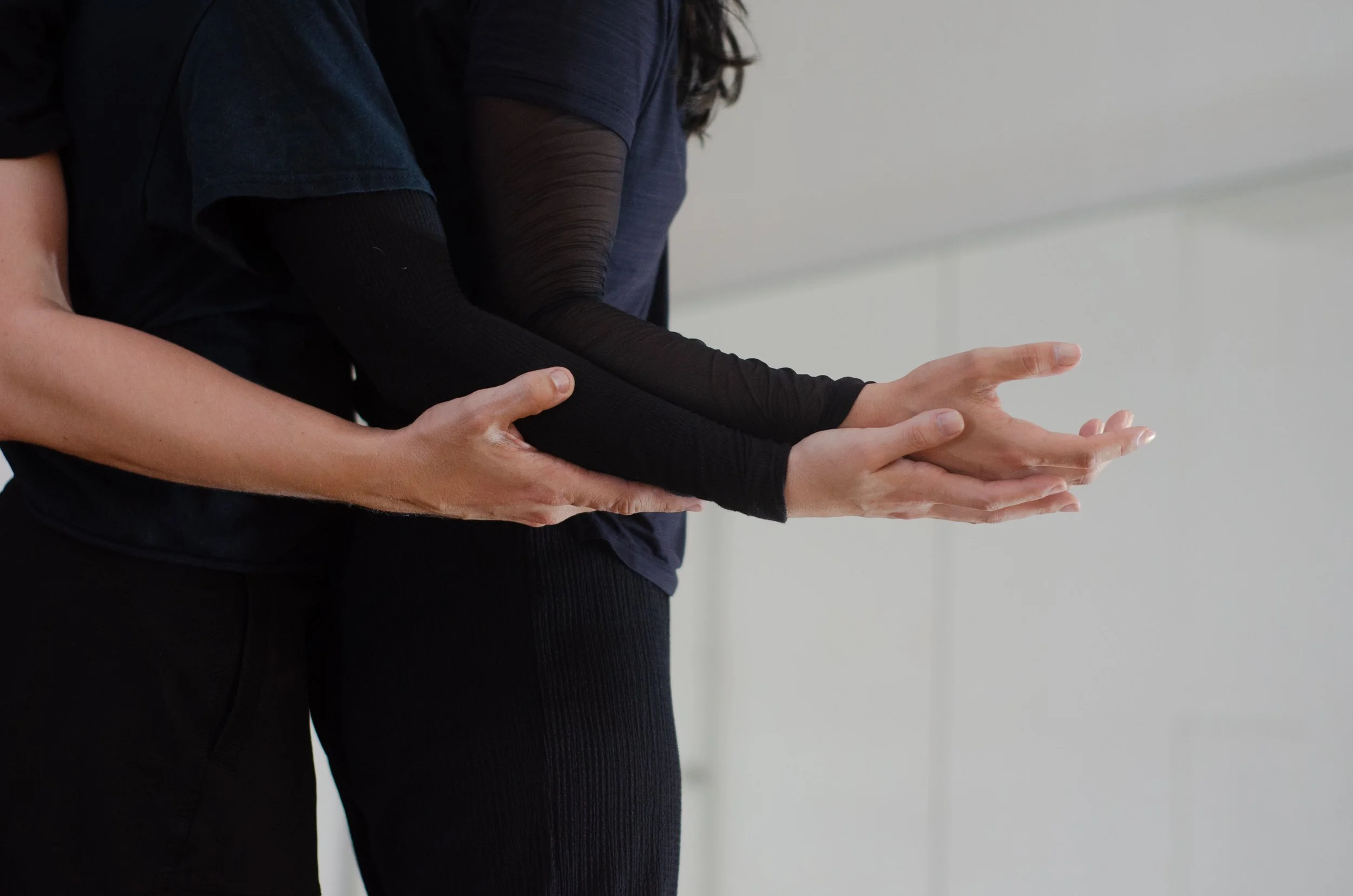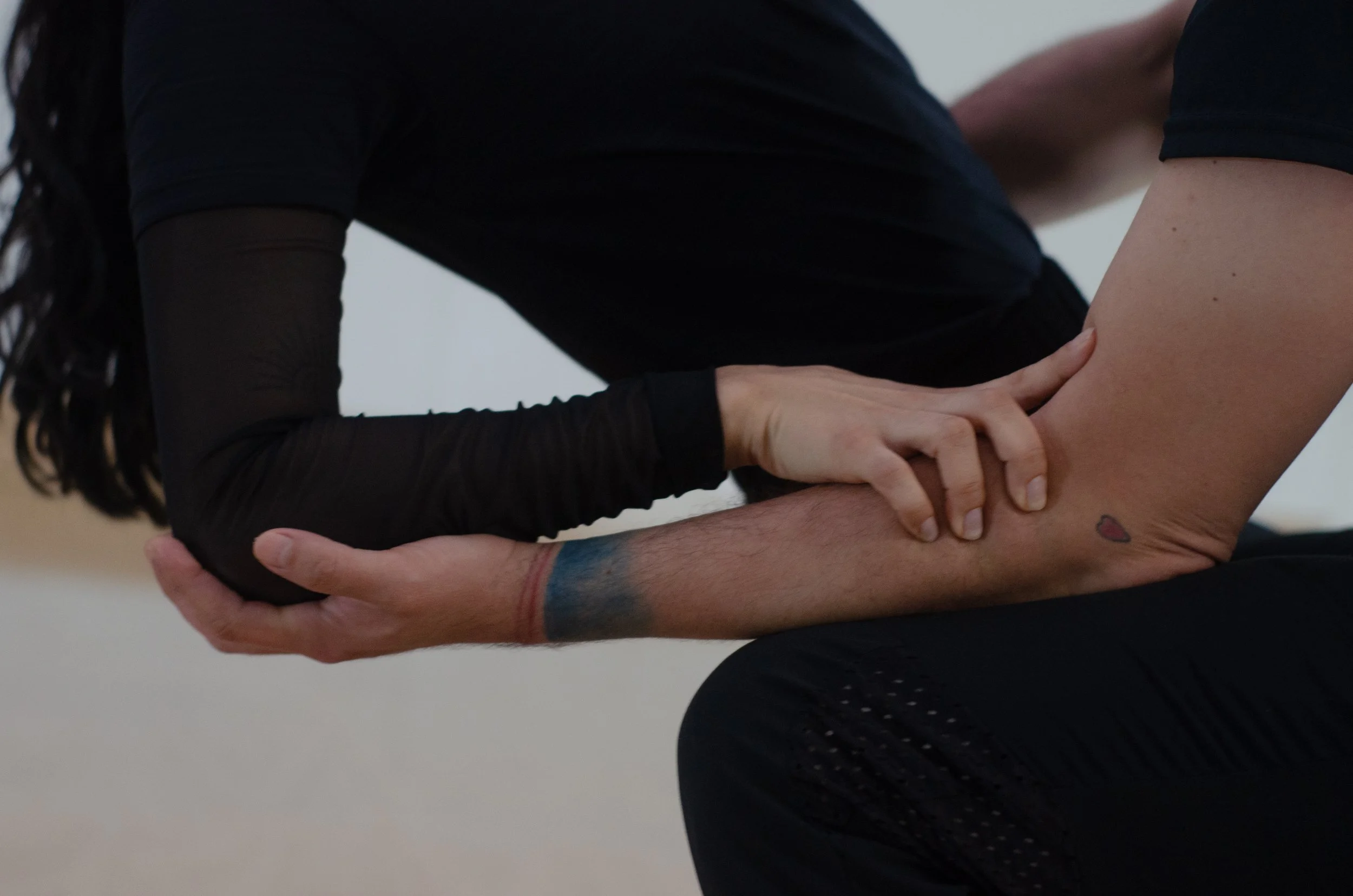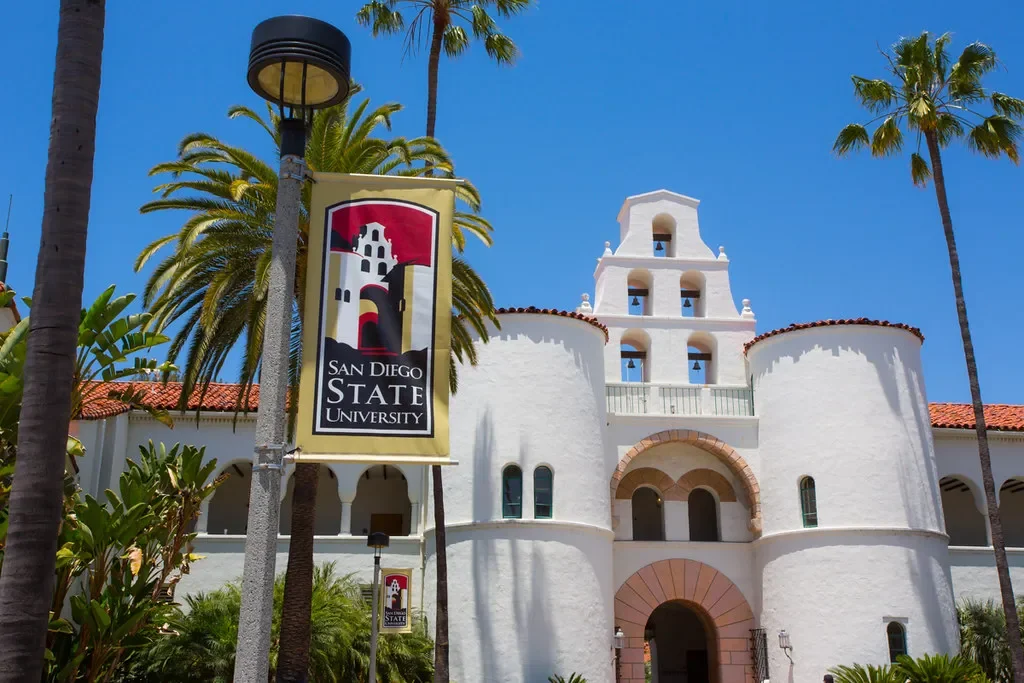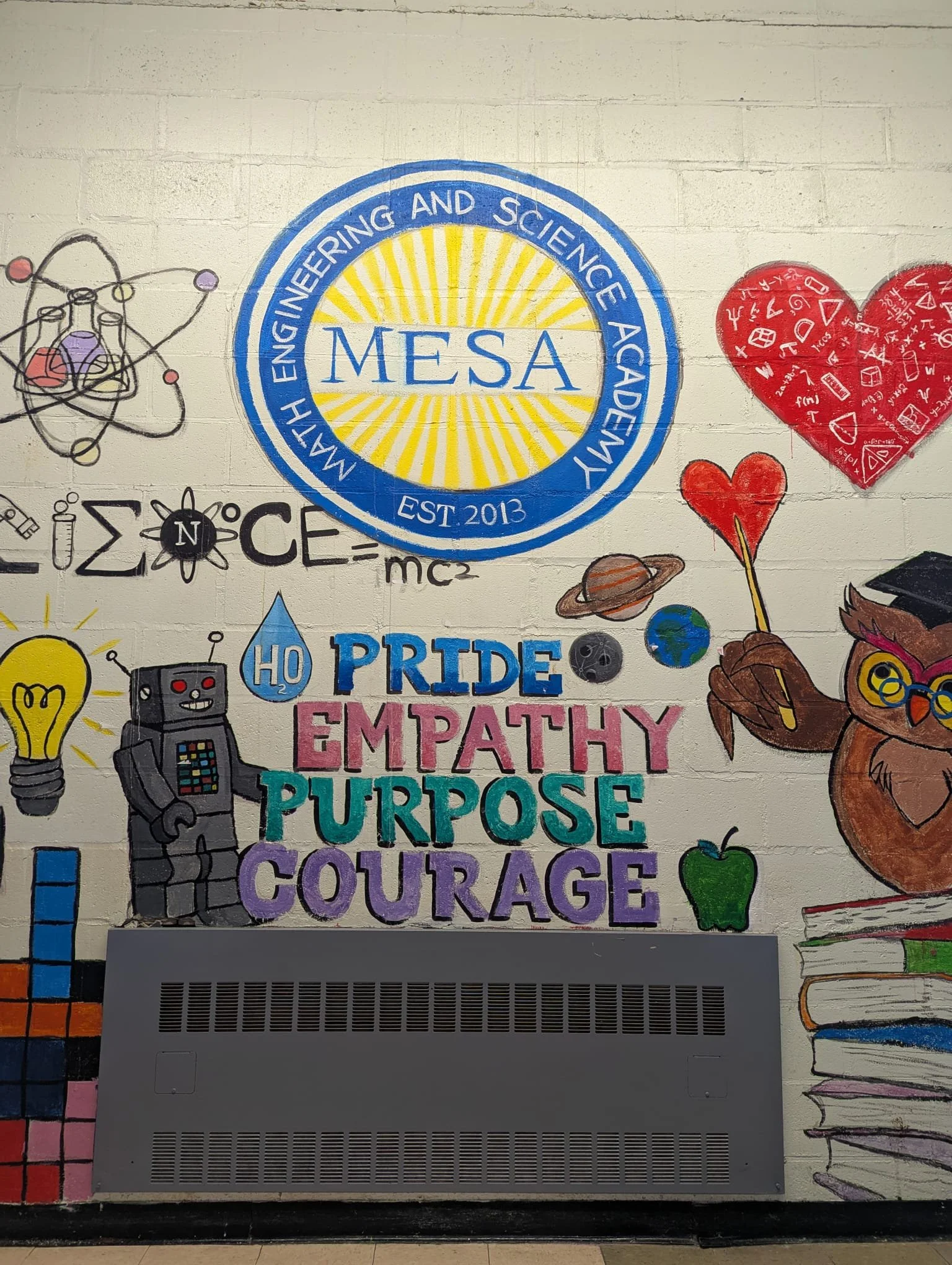
My teaching is rooted in the belief that dance is both a personal inquiry and a collective practice. I create spaces where passion, curiosity, and exploration can flourish, guiding students to think critically, move bravely, and grow as individuals and collaborators.
My approach strikes a balance between form and freedom, where improvisation and technique are seamlessly woven together as tools for discovery, expression, and transformation. I emphasize inclusivity, community engagement, and dialogue, ensuring that every student feels empowered to contribute their own voice.
Whether working with children, college students, or community members, my goal remains the same: to nurture embodied research, foster connection, and support each dancer’s journey toward personal and artistic growth.
Photography by Leo Huerta
Community Centers
I have taught a range of community movement classes and workshops, bringing the principles of the naftali method to dancers of all ages and backgrounds. Classes focus on the interplay of softness and speed, combining sensory-based warm-ups, partner and group explorations, improvisation, and compositional tools. Through these sessions, participants develop technical skill, creativity, and expressive confidence, while cultivating a sense of connection, playfulness, and embodied awareness. My work in community settings emphasizes accessibility, inclusivity, and the transformative power of movement to foster self-discovery and collective engagement.
-
Soft as a Cat, Quick as a Bird, was a pilot class exploring the naftali method. Participants cultivated agility, speed, and fluidity, moving with the precision and intention of a cat’s grace and a bird’s quickness. Exercises emphasized maintaining consistent speed, maximizing body activity, and exploring the full range of motion. The class focused on embodying both softness and quickness through structured exercises and improvisation.
Playground Serieswas a month-long community movement series designed to inspire improvisation, creative play, and self-expression. Participants explored spatial dynamics, honed their listening skills, and cultivated comfort in their own bodies, responding fluidly to shifting environments. Open to all levels, the series encouraged rediscovery of innate creativity and joy in movement.
Both classes were offered in Tijuana, Mexico.
-
An all-level community class drawn from Portal, a larger work directed by Jess Humphrey. Participants explored practices of “seeing” and “sketching,” observing other dancers and translating what they absorbed into their own movement choices. There was a lightness to the way we experienced our visual field and physical choice-making, cultivating presence and agility in the body.
This class was offered in Tijuana, Mexico.
-
Orientation & Weight Workshop (co-led with Richie Villa) was a three-hour workshop exploring changing orientation and weight through score-based movement investigations. Participants experimented with one partner vertical while the other was inverted, and explored how weight could be distributed across different body parts to create rolling points that propelled momentum. Exercises were interwoven with reflection, cultivating presence, awareness, and responsiveness in each moment.
This class was offered in San Diego, California.
-
This class, offered before a community contact jam, explored the edges of the body — both within and without. The external edges were more obvious, while the internal edges required subtle exploration and definition. These edges became places to hang, hold, fling, and rest, while also inviting softness and agility in how dancers moved through them. We moved in and out of partnerships, using this as a working score, which led seamlessly into the community contact improvisation jam.
The class was offered in San Diego, California.
-
Hillel of San Diego State University hosted a community movement class that wove together elements of the Gaga movement language with improvisational partner work. This innovative approach merged the fluidity and sensory exploration of Gaga with the interaction of partner improvisation. Participants explored sensations, textures, and rhythms within their bodies, softening into awareness before extending into partnerwork. The practice emphasized presence, responsiveness, and agility in co-creation, while partnerships developed their own unique language of movement built on shared understanding and mutual trust.
This class was offered in San Diego, California.
-
Creative Movement in Jerusalem was created for Hasidic women, held just before the Jewish High Holidays to infuse the new year with vitality and renewal. The workshop provided a sacred space for playful, uninhibited movement exploration, fostering connection to self, body, and community. Through crafted exercises, participants explored the edges of their own movement potential — softening habitual boundaries while cultivating presence and embodiment.
This class was offered in Jerusalem, Israel.
-
The Popup Community Movement Class invited participants to explore softness as a foundation for movement. Using anatomy, imagery, and metaphor, the class guided participants through exercises designed to deepen their awareness of softness in motion. These explorations highlighted how softness can generate swift, efficient, and agile movement patterns.
This class was offered in San Diego, California
Higher Education
As a Lecturer at San Diego State University, I taught across both studio and lecture settings, serving dance majors, non-majors, and general education students. My courses included Introduction to Dance (a 100-seat general education lecture), Techniques II, Praxis, and a curated special topics course, Israeli Contemporary Dance (Fall 2023), which reached full enrollment with a waitlist.
My teaching emphasized technique as both form and personal inquiry—exploring the elements within movement that must be understood individually to achieve both efficiency and expressivity. Studio classes combined rigorous improvisational frameworks with demanding phrases that extended from improvisation, challenging students to integrate precision with exploration. In the lecture, I designed five learning modules—dance as ritual, social practice, entertainment, therapy, and art—inviting students to analyze dance across cultural and historical contexts while deepening their appreciation for its role in society.
-
A specialized course for dance majors that cultivates the “available body” — one that is soft, agile, and poised for action. Through rigorous training and improvisation, students developed responsiveness, adaptability, and a deeper understanding of the subtle nuances of movement. The class emphasized embodiment and presence, encouraging dancers to expand their physical potential and approach dancing with agility and openness.
This class was taught at San Diego State University.
-
An upper-division course for dance majors focused on advanced modern techniques. Students engaged in movement research on effort and multitasking, exploring how to fulfill material with both precision and ease. Improvisational warm-ups and informed phrase work encouraged dancers to strike a balance between efficiency and artistic virtuosity. The course invited students to ask: How can I express passion while remaining loyal to the technique?
This class was taught at San Diego State University.
-
A curated, studio-based course that explores the choreographic tools and movement philosophies that define Israeli contemporary dance. Students engage with ideas such as dancing without ambition, negotiating gravity, multitasking movement concepts, and connecting effort with delicacy and pleasure. Rooted in practice rather than appearance or achievement, the class welcomes students of all backgrounds. Readings included Contemporary Dance in Israel by Deborah Friedes Galili.
This class was taught at San Diego State University.
-
A 100-seat general education course examining dance through ritual, social practice, entertainment, therapy, and art across local and global perspectives. Students developed analytical tools through observation, discussion, writing, and movement experiences, guided by questions of representation and meaning in the body. The revised syllabus I restructured proved so successful that it remains in use today. Readings included Moving History/Dancing Cultures: A Dance History Reader by Ann Cooper Albright.
This class was taught at San Diego State University.
-
A curated hybrid course that used feminist theory as a springboard for choreography and composition. Students engaged in seminars to theorize the body and studio workshops to physicalize socially conscious art, connecting scholarship with personal creative practice. Open to all levels of dance training and feminist studies.
This course was awarded an $18,000 University Teaching Assistantship Fellowship at the University of Utah, one of a select few chosen through a competitive campus-wide process. The MFA Dance program continues to use it as an exemplar. Readings included Feminist Theory Reader: Local and Global Perspectives by Carole Ruth McCann and Seung-Kyung Kim, and Living a Feminist Life by Sara Ahmed.
This class was taught at the University of Utah.
Secondary School
At MESA Charter High School, I teach dance to 127 freshmen in a community where 97% of the student population identifies as Latinx. My classes center on Latin dance, Afrobeat, and Hip Hop, reflecting and celebrating the cultural roots of my students. I also support English Language Learners and students with Individualized Education Plans through inclusive practices and differentiated instruction.
The course is structured using a Standards-Based Grading model, where each trimester focuses on five learning goals, accompanied by three formal assessments per goal. Alongside technical training, students develop dance appreciation skills—learning how to speak about dance, analyze works, and apply compositional tools to create their own pieces. This approach cultivates both artistic literacy and cultural pride, empowering students to see themselves as dancers, creators, and critical thinkers.
-
Students spend a trimester immersed in Latin dance, Afrobeats and African Diaspora forms, and Hip Hop. Each week introduces a new technique through foundational steps, which are then developed into variations, practiced across the floor, and woven into phrasework.
Latin Dance: Bachata, Merengue, Flamenco, Salsa, Cumbia, Samba, Bomba, and Tango.
Afrobeats & African Diaspora: Gwara Gwara, traditional West African forms, Afropiano, Zanku, Pilolo, Network, among others.
Hip Hop & Street Styles: Breaking, Whacking, Pop & Lock, Vogue, and Krump.
This structure exposes students to diverse movement vocabularies while deepening their technical foundations and cultural awareness.
-
Alongside learning each dance style, students study its history and cultural context, building respect and understanding for the form. They also develop vocabulary to articulate movement and ideas, practicing critique and feedback with peers. This segment emphasizes critical thinking as much as physical practice, shaping students into both thoughtful observers and engaged dance practitioners.
-
Students explore a new compositional tool each week, using it to transform and reimagine choreography learned in the technique section. Tools include Mirroring, call and response, Shadowing, Canon, ABA form, and more, encouraging students to make intentional, creative choices and develop their own choreographic voice.
Early Childhood Education
At Achievement First Legacy Elementary, I taught dance to over 270 students in grades K–3. My classes embraced the principles of Universal Design for Learning, supporting multilingual learners and students with Individualized Education Plans. The school’s student body was predominantly Black with a smaller Latinx population, and I designed lessons that honored and reflected this community. By incorporating cultural and communal dances, I aligned the curriculum with heritage celebrations throughout the year, fostering joy, inclusivity, and a deeper connection to students’ identities and traditions.
-
Students explore dances that were “novel” in their time, drawn from songs, shows, and pop culture across different eras. These playful dances encourage creativity, coordination, and joy while connecting students to movement trends from the past and present.
-
Students learn popular social dances designed for group participation, building connection and cooperation. Examples include Jerusalema, Electric Slide, The Wobble, The Macarena, and other fun, accessible group dances.
-
Students engage with culturally significant dances including salsa, merengue, hip hop, and West African forms. These classes introduce age-appropriate context while fostering respect, awareness, and appreciation through movement.





